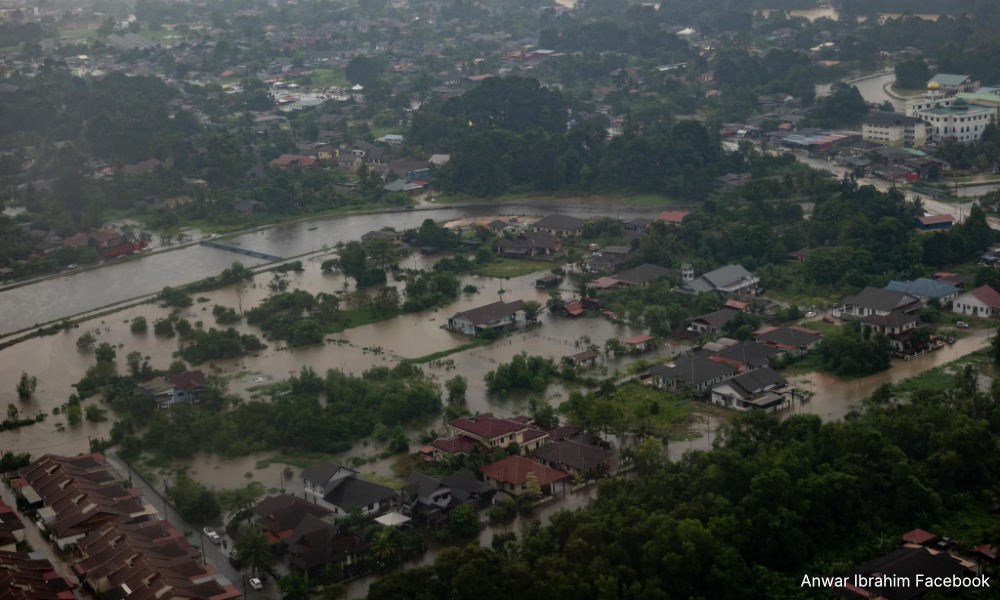LETTER | Malaysia has long been grappling with the devastating consequences of annual floods, particularly in states such as Kelantan and Terengganu, where the monsoon season wreaks havoc on communities.
This review examines Malaysia’s current challenges and draws inspiration from the success of the Netherlands - a country renowned for its innovative flood management systems.
It explores how government agencies, environmental engineers, and law enforcement can collaborate to mitigate floods effectively.
Recurring flood crisis
Floods in Malaysia are not an isolated or infrequent phenomenon; they have become an annual disaster, claiming lives, displacing thousands, and causing extensive economic losses.
The Northeast Monsoon season, which runs from October to March, often overwhelms drainage systems and exacerbates the vulnerabilities of poorly planned urban and rural areas.

The need for a paradigm shift - one that prioritises prevention, resilience, and long-term solutions - has never been more apparent.
Malaysia can look to the Netherlands, which transformed its flooding challenges into an opportunity for innovation, to inspire its approach.
Government’s role
Effective flood management begins with strong governance. Malaysia must strengthen its policies and coordination mechanisms by empowering the National Disaster Management Agency (Nadma) to act as a central authority.
Clear, unified directives will prevent bureaucratic delays and ensure that federal, state, and local agencies work seamlessly.
Additionally, Malaysia can emulate the Netherlands’ “Room for the River” programme, which incorporates controlled flooding areas, river widening, and elevated infrastructure to protect densely populated regions.
Reforming urban planning regulations to include mandatory flood mitigation measures - such as prohibiting construction in flood-prone zones - would also significantly reduce risk.
Engineering solutions
Environmental engineers hold the key to designing innovative, science-based solutions to address flooding.
The Netherlands serves as a global benchmark in flood mitigation, boasting sophisticated systems such as storm surge barriers, dikes, and water storage reservoirs.
Malaysia could adapt these technologies to its unique geography, especially in urban centres like Kuala Lumpur and flood-prone rural areas.
Integrating natural and engineered systems - such as restoring wetlands, mangroves, and rivers - would mirror Dutch efforts to balance development with nature.
The Netherlands’ use of real-time monitoring systems and flood prediction technologies could also enhance Malaysia’s disaster preparedness and response capabilities.
Law enforcement
Law enforcement plays a pivotal role in ensuring the success of flood management strategies. In Malaysia, illegal logging, unregulated mining, and unchecked urban development often exacerbate flooding.
Strict enforcement of environmental laws, coupled with heavy penalties for violations, is crucial to controlling these activities.
Malaysia can follow the Dutch model, where strict regulations ensure that urban development adheres to flood resilience standards.
Community engagement
No flood management blueprint can succeed without the active involvement of local communities.
Public awareness campaigns should educate citizens on flood preparedness, such as creating personal evacuation plans and understanding early warning systems.
Malaysia can replicate the Netherlands’ approach to community involvement, where citizens are encouraged to participate in local water management initiatives.
Involving local communities in decision-making fosters trust and ensures that solutions are tailored to specific regional needs.
Collaboration across sectors
The flood crisis cannot be resolved in silos. Collaboration between government agencies, engineers, law enforcement, and communities is essential.
Malaysia could emulate the Netherlands’ cooperative model, where public-private partnerships fund large-scale infrastructure projects and academic institutions contribute valuable research and data.
International collaboration with Dutch experts and organisations, such as Deltares (a research institute specialising in water management), would provide Malaysia with critical insights and innovative solutions.
Beyond borders
While the Netherlands has become a symbol of effective flood management, its strategies are not limited to its borders.
Countries like Bangladesh and Vietnam have also adopted elements of the Dutch approach, tailoring them to their own contexts.
Malaysia, too, can customise these proven solutions to suit its climate, topography, and socio-economic conditions.
By adopting the Dutch model of prioritising prevention and innovation, Malaysia has the potential to become a leader in flood management within Southeast Asia, inspiring other nations to take a proactive stance against similar challenges.
Turning vision into reality
The floods in Malaysia are a stark reminder of the urgent need for decisive, collaborative action. By drawing lessons from the Netherlands, Malaysia has an opportunity to transform its flood management strategy into a model of innovation and resilience.
With shared commitment and the right solutions, Malaysia can not only safeguard its citizens from devastating floods but also inspire the world to turn the tide against similar challenges.
The views expressed here are those of the author/contributor and do not necessarily represent the views of Malaysiakini.

